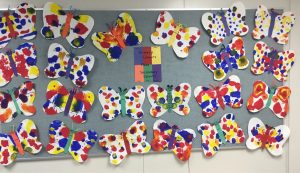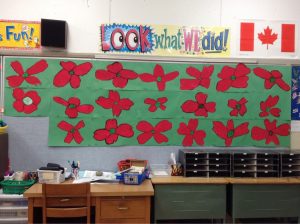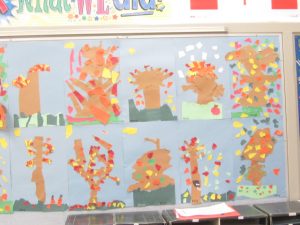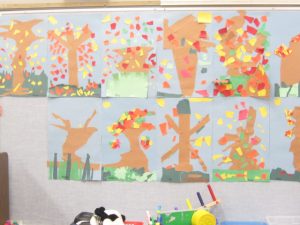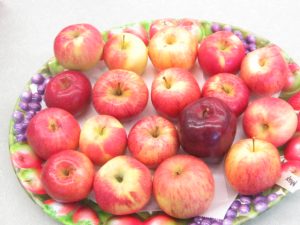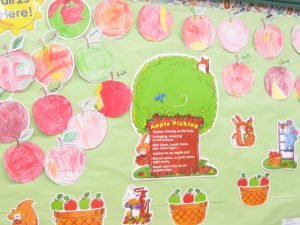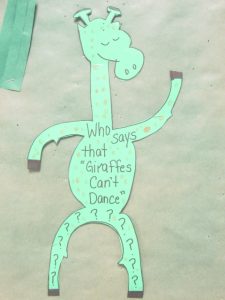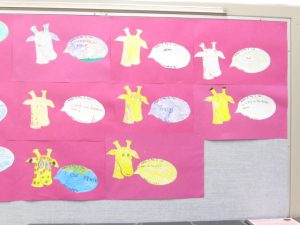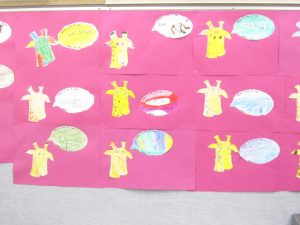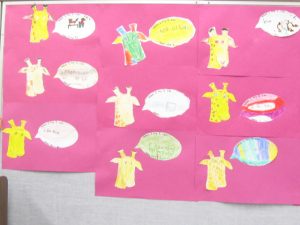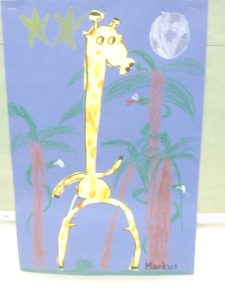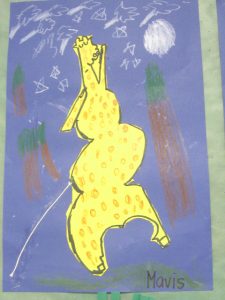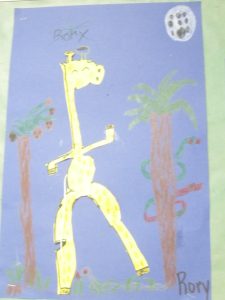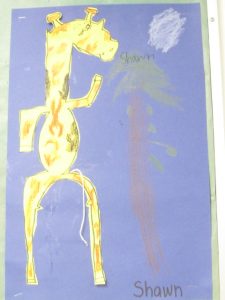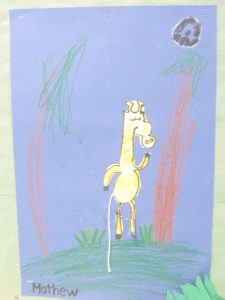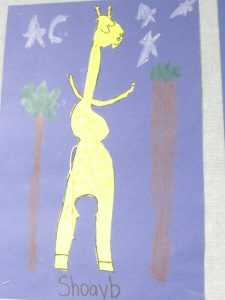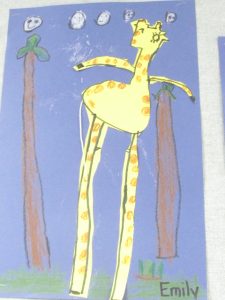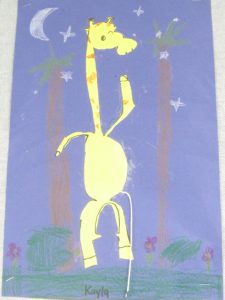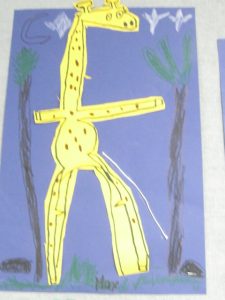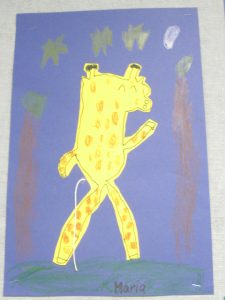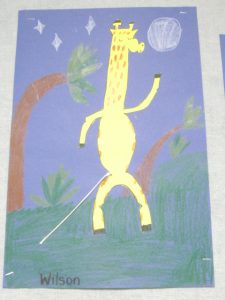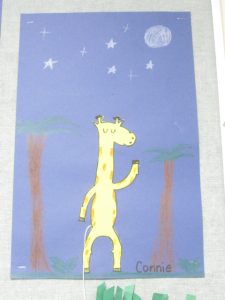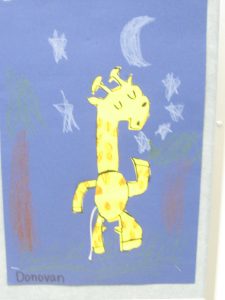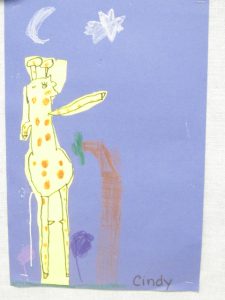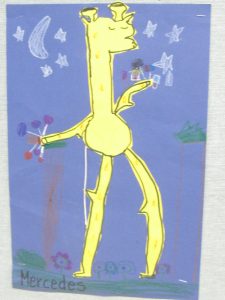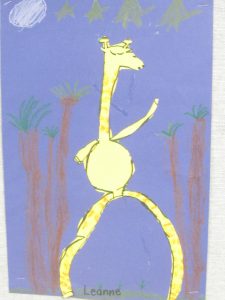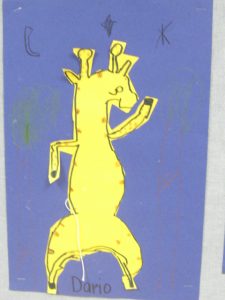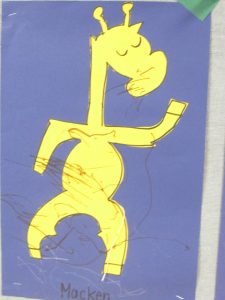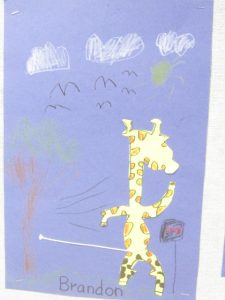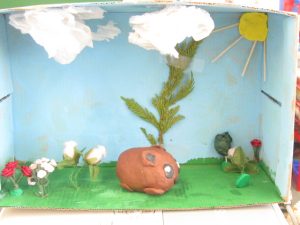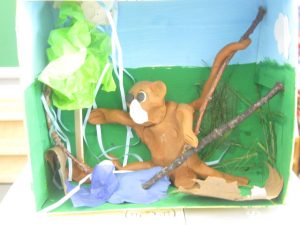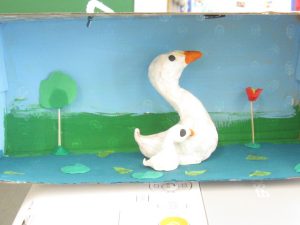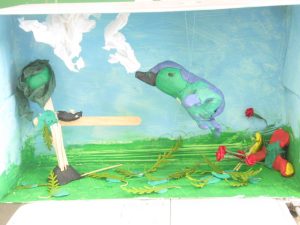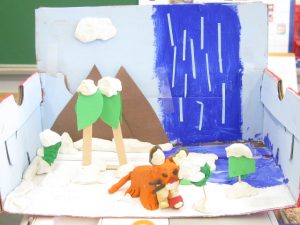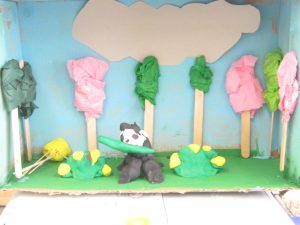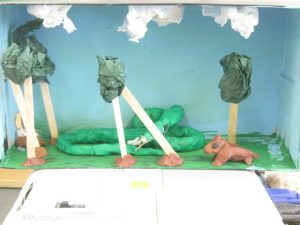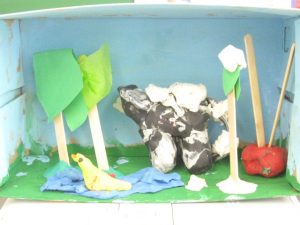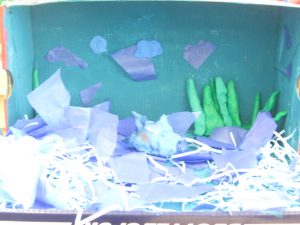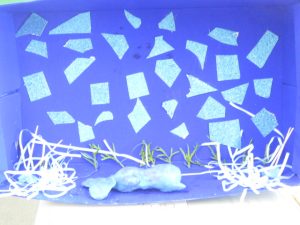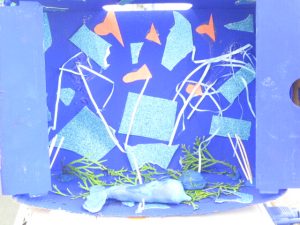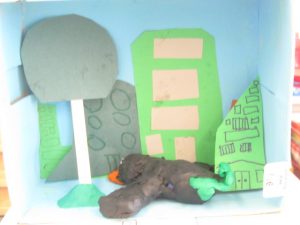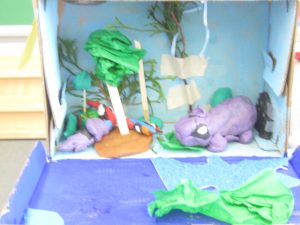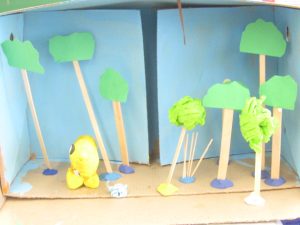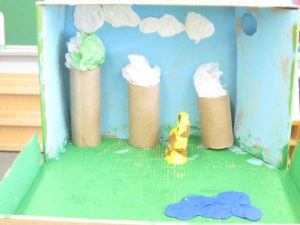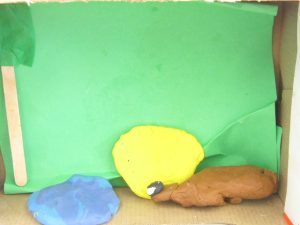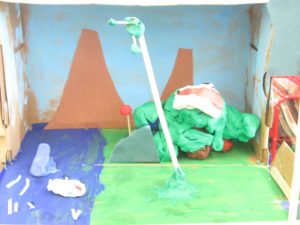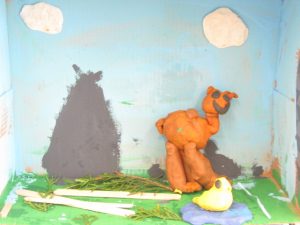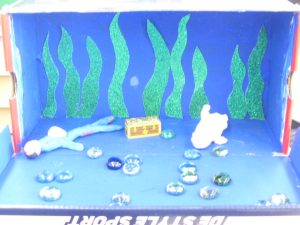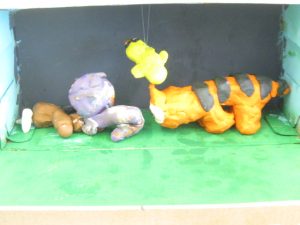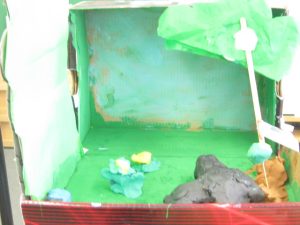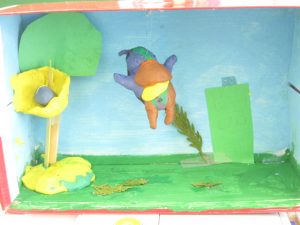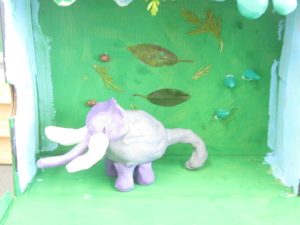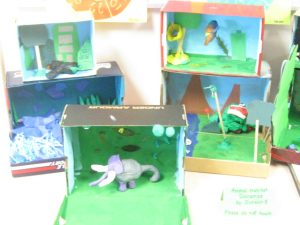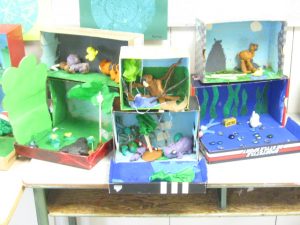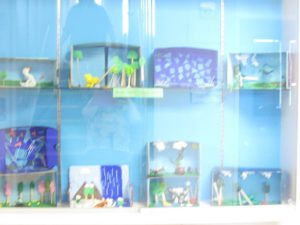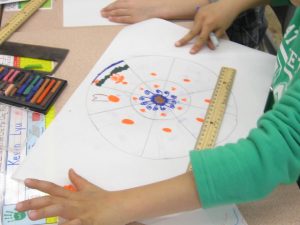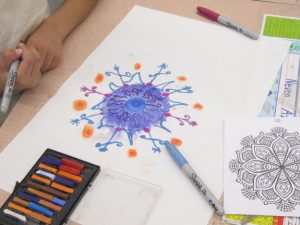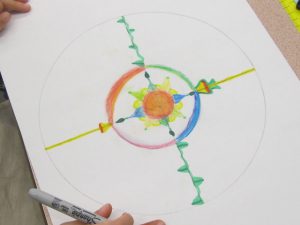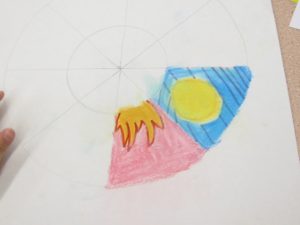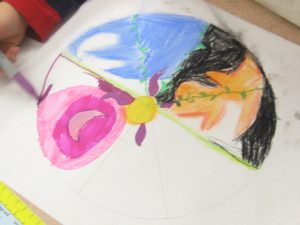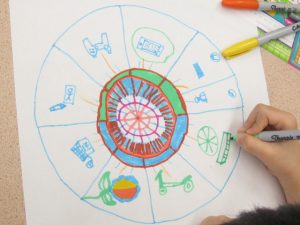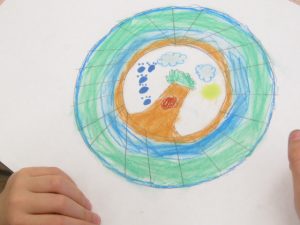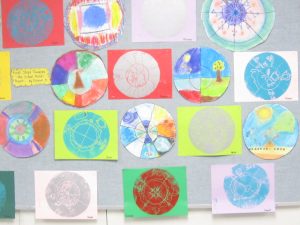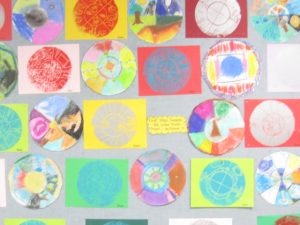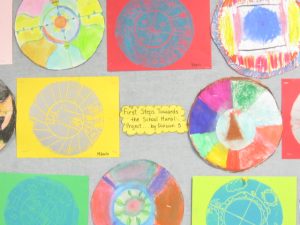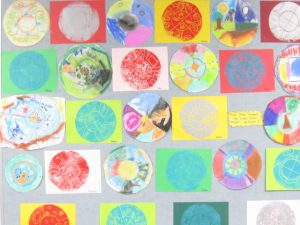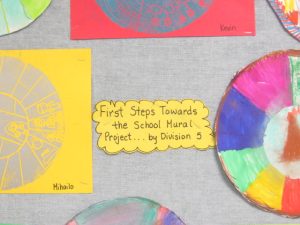After a directed drawing lesson the students completed their pictures with oil pastels. Most have been put on the bulletin board in the Office and the rest are on the bulletin board in the hallway.
Category: Art Programme
Bernard, the Butterfly, and some of his cousins!
Poppies … lest we forget …
Students created beautiful poppies.
We began with a directed drawing lesson where the students drew a large poppy on white paper. They then traced these with black China markers (a type of grease pencil). The centre circle was solidly coloured in with green waxed crayons. Students then painted the petals red. This all happened on Friday. Today, when the paint was dry, students traced over their outlines, cut the poppies out, and glued them onto green construction paper.
The complementary colours (red and green) really pop when put together!
These are on the bulletin board at the back of our classroom. They look amazing!
Invertebrates Under the Sea …
Look at the awesome mural that the students have made for our look at invertebrates which reside under the ocean waters!
Our grade twos did the painting and all students created an invertebrate creature. They first drew their creature, then they outlined them with Sharpie markers, and finally, they coloured them with oil pastels.
This mural is on a bulletin board in our classroom. Check it out if you are in the school.
Ripped Paper Fall Pictures
Apples Galore …
Thank you to all parents who sent in an apple for our apple explorations. Students noticed that apples came in all sorts of varieties, colours, sizes, and shapes.
Students spent some time observing their apple and then making a pictorial presentation by colouring a paper apple in as close a copy of their apple as possible.
We have looked at how the apple life cycle works:
We will continue our explorations this week with the apple life cycle and how it correlates to the seasons of the year.
Who says, “Giraffes Can’t Dance”.
We read the story, “Giraffes Can’t Dance”, by Giles Andreae. It is a story about Gerald, a giraffe who longs to dance like everyone else but he just can’t seem to get it right because his legs are too long and skinny.
Afterwards we discussed how the cricket gave Gerald the confidence to try his best and to not give up. Gerald may not dance like everyone else does, but he does dance.
Students then thought of something that they can do if they try their best. They created talking bubbles with their ideas and put them next to a Gerald head.
We then had a directed drawing lesson on drawing Gerald dancing – firstly on a practise white paper and then onto yellow construction paper. Student added the details in black Sharpie, cut them out, and glued them onto blue construction paper. They are all very unique and individualistic with the facial expressions and the dance moves. They are on the bulletin board outside of our classroom.
Animal Habitat Dioramas
Firstly, a huge thank you to all the parents who helped their child get ready for this week of building!!
Students spent the week creating their habitat for their chosen animal. The shoe boxes went from a plain old box to a wonderful home for their plasticene animals.
I hope you agree … here they are …
These are on display on two tables in the hallway outside of our classroom and in the display case on the second floor. I hope you get a chance to see them when you are in the school. These pictures don’t really do the work justice, especially the glare from the display case glass 🙂
I hope you enjoy them as much as the kids did making them!
Arts Alive Opening Night
This Thursday evening is the Opening Night at the Burnaby Art Gallery. The event is scheduled from 6:00 – 8:00 p.m. I hope you get a chance to get there to see our contribution to this wonderful event. Division 1 and 2 also have their work on display there.
The School Mural Project
We had two different sessions with the artists-in-residence who are coordinating our school-wide mural project. This mural will be painted on the six panels on the wall in the undercover area by the school’s front door. Intermediate students will be working on the backgrounds and the primary students will be doing the added details. These details will be in the form of mandelas – circular pieces of art.
In preparation for this mural the artists came into our class and taught the students about ‘mandelas’. Mona discussed the theme of nature and introduced the concept of symmetry. Students were encouraged to make designs which were important to them and representative of themselves. They began by tracing circles onto their paper. Smaller circles were placed in the centre of these. Lines were drawn on which dissected these circles. Designs were created within and without these areas. Students used coloured Sharpie felt pens and special pastels which are a sort of combination of chalk and oil.
The artists came back the week later for our second session. At this time students worked on styrofoam sheets which had circles drawn on them. Students drew their designs using ballpoint pens which basically carved their designs into the base. Students then chose a coloured paper and an ink. Using rollers the students covered their designs with the ink and then placed their paper on it. They needed to rub the two together in order to ensure that a good contact was achieved. The plates were then peeled off to reveal their print.
When they were dried there were placed on the bulletin board interspersed with their original mandelas. These will still be on the bulletin board when you come in next week for our Student Led conferences.
Here are a few of them:



